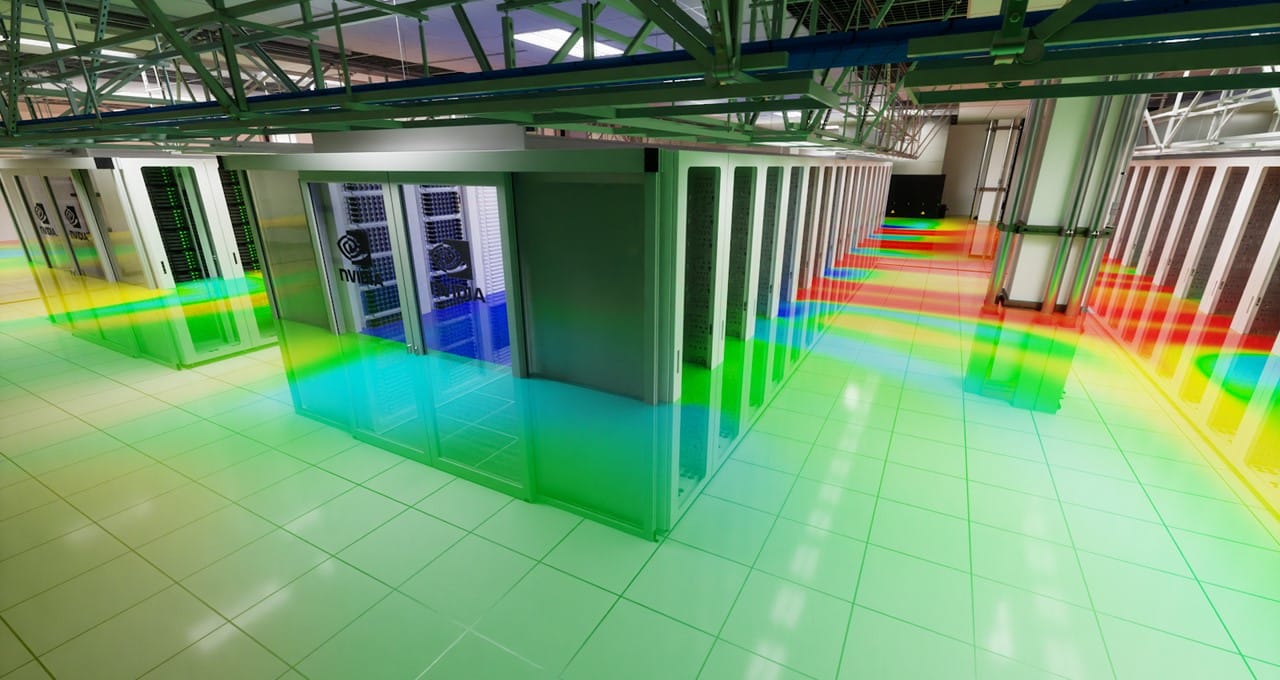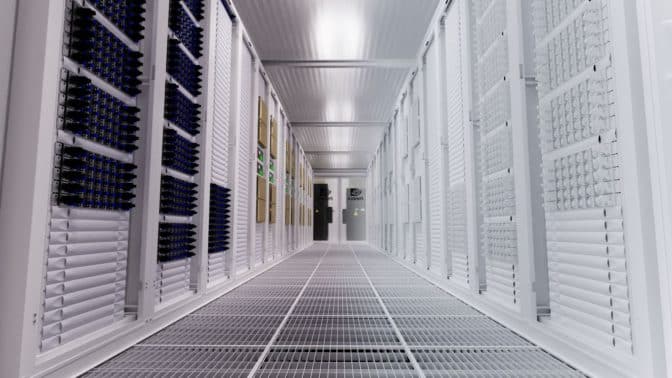The technologies powering the world’s 7 million data centers are changing rapidly. The latest have allowed IT organizations to reduce costs even while dealing with exponential data growth.
Simulation and digital twins can help data center designers, builders and operators create highly efficient and performant facilities. But building a digital twin that can accurately represent all components of an AI supercomputing facility is a massive, complex undertaking.
The NVIDIA Omniverse simulation platform helps address this challenge by streamlining the process for collaborative virtual design. An Omniverse demo at SC22 showcased how the people behind data centers can use this open development platform to enhance the design and development of complex supercomputing facilities.
Omniverse, for the first time, lets data center operators aggregate real-time data inputs from their core third-party computer-aided design, simulation and monitoring applications so they can see and work with their complete datasets in real time.
The demo shows how Omniverse allows users to tap into the power of accelerated computing, simulation and operational digital twins connected to real-time monitoring and AI. This enables teams to streamline facility design, accelerate construction and deployment, and optimize ongoing operations.
The demo also highlighted NVIDIA Air, a data center simulation platform designed to work in conjunction with Omniverse to simulate the network — the central nervous system of the data center. With NVIDIA Air, teams can model the entire network stack, allowing them to automate and validate network hardware and software prior to bring-up.
Creating Digital Twins to Elevate Design and Simulation
In planning and constructing one of NVIDIA’s latest AI supercomputers, multiple engineering CAD datasets were collected from third-party industry tools such as Autodesk Revit, PTC Creo and Trimble SketchUp. This allowed designers and engineers to view the Universal Scene Description-based model in full fidelity, and they could collaboratively iterate on the design in real time.
PATCH MANAGER is an enterprise software application for planning cabling, assets and physical layer point-to-point connectivity in network domains. With PATCH MANAGER connected to Omniverse, the complex topology of port-to-port connections, rack and node layouts, and cabling can be integrated directly into the live model. This enables data center engineers to see the full view of the model and its dependencies.
To predict airflow and heat transfers, engineers used Cadence 6SigmaDCX, a software for computational fluid dynamics. Engineers can also use AI surrogates trained with NVIDIA Modulus for “what-if” analysis in near-real time. This lets teams simulate changes in complex thermals and cooling, and they can see the results instantly.
And with NVIDIA Air, the exact network topology — including protocols, monitoring and automation — can be simulated and prevalidated.
Once construction of a data center is complete, its sensors, control system and telemetry can be connected to the digital twin inside Omniverse, enabling real-time monitoring of operations.
With a perfectly synchronized digital twin, engineers can simulate common dangers such as power peaking or cooling system failures. Operators can benefit from AI-recommended changes that optimize for key priorities like boosting energy efficiency and reducing carbon footprint. The digital twin also allows them to test and validate software and component upgrades before deploying to the physical data center.
Catch up on the latest announcements by watching NVIDIA’s SC22 special address, and learn more about NVIDIA Omniverse.


